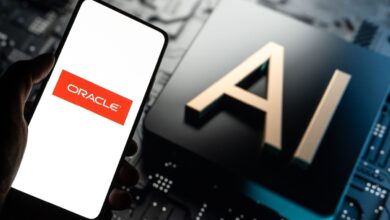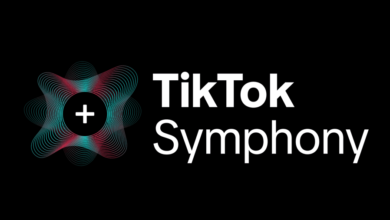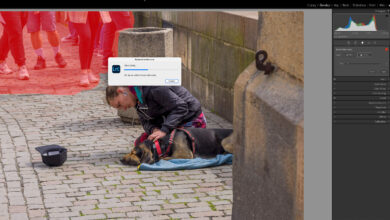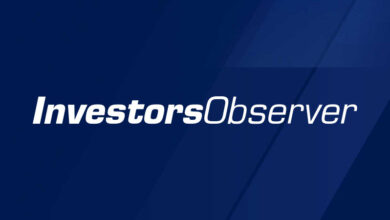How Generative AI Will Change The Jobs Of HR Professionals

HR is fundamentally about managing humans – so how will the job change in a future where powerful generative AI tools are everywhere?
Empathy, emotional intelligence and an understanding of human nature are essential when it comes to managing a human workforce. Not exactly qualities that machines – even ones as human-like as ChatGPT – are renowned for!
So are we going to see widespread replacement of human HR departments with cold, calculating chatbots that only care about measuring human efficiency and weeding out weakness?
Well, hopefully not. Instead, I think that HR professionals will use generative AI to automate routine and repetitive elements of their work, freeing time for them to nurture and develop the human-to-human skills needed for their more high-value tasks.
Here’s my overview of how I believe the work of HR departments will change – and, in many cases, already is. I’ll also take a look at the wider implications for how the place of these essential professionals in society is likely to evolve over the next five to 10 years.
Recruitment And Talent-Hunting
Finding talented people is always a challenge, but generative AI tools will help out with the routine and administerial work. Not just by doing it more quickly, but by finding more efficient and personalized ways to reach out to prospective hires and advertise a workplace.
At the start of the process, it will be used to generate ideas around ideal candidate personas, creating overviews of the skills, qualities and personality traits that might make an applicant right for the job. Then, it can create dynamic, personalized job descriptions aimed at encouraging a wider pool of applicants.
For companies that hire thousands every year, it will be used to carry out initial assessments to ensure candidates meet basic criteria. After that, it can offer simulated interviews and roleplays to help candidates prepare for their application. Rather than used as a form of screening, it should be thought of as a tool that will help recruiters and other HR professionals to get a better understanding of candidates as unique human beings, before meeting them face-to-face.
Workforce Development
Businesses are going to need to ensure their workforces are equipped with the skills needed to succeed in the AI era, and this responsibility falls on the shoulders of HR workers.
Generative AI is great for training – it can create anything from complex technical manuals to simple step-by-step walkthroughs. Public models like ChatGPT already capable of doing this, but businesses will increasingly invest in training their own private AI models tailored to their needs.
These reports can be personalized to individual learners, taking into account their unique skills and learning requirements.
As we move forward, we will find generative video and even world simulation tools becoming available. These will be used to create even more engaging, personalized training experiences. Language models will provide feedback in real-time, just as if the trainee had an instructor standing with them.
There are some risks here – we know generative AI doesn’t always get things right, which could lead to dangerous misinformation or mistakes. So, there will always be a need for transparency about how these systems operate, as well as human oversight.
Workplace Management And Analytics
Rather than spending hours studying metrics and statistics, generative AI tools can quickly analyze data and compile reports highlighting key workforce trends.
It can identify future staffing needs and highlight areas and causes of high staff turnover. It will provide quick, relevant insights into factors like employee sentiment and satisfaction. It will also be used to create narrative and visual projections around the impact of strategic HR decisions.
All of these will make it simpler for HR professionals to understand the underlying human element driving the success or failure of a business.
Of course, we have to be careful when it comes to converting human activities and emotions into numbers. Bias in the way data is collected or the way it’s analyzed can lead to unfair outcomes, and overly-intrusive data gathering or AI initiatives can create unhappy employees. Risks in all of these areas must be carefully assessed and guarded against.
Employee Experience
It’s the job of HR departments to create inclusive, positive experiences for workers throughout the business. Ensuring employees are able to carry out their duties effectively without being hindered or held up by internal processes is a critical task.
Here, generative AI will be used for creating onboarding material that’s relevant to individual new hires, providing answers to common HR queries in a personalized and relevant way through chatbots, and gathering and interpreting employee feedback.
Here, quality of service is of utmost importance. Few things are as irritating as talking to bad chatbots. At the same time, more people are coming to accept that when used well, they can be a very efficient way of getting information.
This all helps HR departments to understand “pain points” that employees go through on a day-to-day basis, as they carry out their work as well as navigate their own career pathways.
The Changing Role Of HR Professionals
With generative AI taking on the routine and administrative elements of their work, the perception of HR professionals in the workplace will change dramatically. The higher level of visibility given to the human-centric elements of their work will mean they are less likely to be perceived as “back office” or even “faceless” functions, instead becoming more deeply ingrained in the working lives of their colleagues. The role of HR professionals in staff wellness and the development of healthy work/life balance, as well as promoting inclusion and diversity, will come to the front.
This means that the strategic value of HR professionals will grow exponentially. Moving beyond being facilitators of operational efficiency, they will have the chance to become champions of positive organizational change, ethical application of technology, and curators of healthy, caring workplace culture.
Follow me on Twitter or LinkedIn. Check out my website or some of my other work here.



